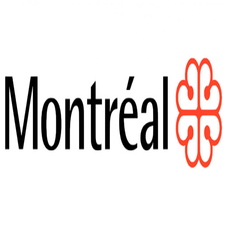Protected area
Type of resources
Topics
Keywords
Contact for the resource
Provided by
Formats
Representation types
Update frequencies
status
-

This dataset includes various offers related to nature and outdoor sports. Among other things, there are national and regional parks, wildlife reserves, equestrian centers, equestrian centers, marinas, skating rinks, beaches, downhill ski centers, cross-country ski centers, golf courses, ice fishing centers. Please note that this dataset is an overview of the tourist offer in Quebec and is not intended to identify the entire offer. This data comes from the Quebec Tourism Information System (SIT Quebec). In addition, if your interest lies in obtaining official indicators and statistics on the Quebec tourism industry, we invite you to explore the Tourism Studies and Statistics section of the Québec.ca site at the following link: https://www.quebec.ca/tourisme-et-loisirs/services-industrie-touristique/etudes-statistiques.**This third party metadata element was translated using an automated translation tool (Amazon Translate).**
-

Biological refuges are small forest areas located on the domain of the State and permanently removed from forest management activities in order to maintain the biological diversity associated with old forests. Their management is under the responsibility of the Ministry of Natural Resources and Forests (MRNF). Forest management activities are prohibited on the territory of a biological refuge, with few exceptions. There are currently 3,704 biological refuges in Quebec, distributed relatively uniformly throughout managed forests in the domain of the State. Biological refuges can be designated under the Sustainable Forest Development Act (LADTF, chapter A-18.1) or in draft before legal designation. Legally designated organic refuges make up the vast majority. They are exempt from industrial activities, which allows them to be registered in the Quebec Register of Protected Areas (RAP) maintained by the Ministry of the Environment and the Fight against Climate Change, Wildlife and Parks (MELCCFP). This data comes from the MRNF STF system, which is the __official source__ of this geographic information.**This third party metadata element was translated using an automated translation tool (Amazon Translate).**
-

This data set contains the polygons delimiting the protected or in the process of being protected indoor natural environments in the agglomeration of Montreal. It does not include the protected aquatic environments of large bodies of water that fall under the jurisdiction of the governments of Quebec and Canada.**This third party metadata element was translated using an automated translation tool (Amazon Translate).**
-

Forest ecosystems located on the domain of the State and of particular interest for the conservation of biological diversity, because of their rare or ancient nature, or because they are home to one or more threatened or vulnerable plant species. Their management is under the responsibility of the Ministry of Natural Resources and Forests (MNRF) and they may be classified under the Sustainable Forest Development Act (LADTF, chapter A-18.1). Forest management activities are prohibited on the territory of an exceptional forest ecosystem, with few exceptions. Currently, there are 256 classified EFEs. This data comes from the MRNF STF system, which is the __official source__ of this geographic information.**This third party metadata element was translated using an automated translation tool (Amazon Translate).**
-

This product integrates all the boundaries of public forest territory: according to the Law on Sustainable Forest Land Management (LADTF), the public forest territory consists of management units (UA), local forests (FP), residual forest territories (TFR), residual forest territories (TFR), forests for education and research (FR), forests for education and research (FER), forests for education and research (FER), the Duchesnay forest station, experimental forests (FE), exceptional forest ecosystems (FR), exceptional forest ecosystems (FR), EFE), biological refuges. Depending on the type of territory, rights may be granted under specific conditions and/or excluded from all forest management activities. The mapping of these public forest territories is necessary for several MRNF mandates including the determination of forest opportunities, the allocation of wood volumes and finally the planning and monitoring of forest management works. In addition to these territories and rights granted, there are forest administrative boundaries that are in force at the MRNF, such as private forest development agencies, pricing zones, management units (UGs), territories of analysis of the Chief Forester (FEC), etc. This product is maintained in the MRNF STF system and several official entities of the Ministry have their origins in it. For more information on how to do this, please consult the lexicon that accompanies the datasets.**This third party metadata element was translated using an automated translation tool (Amazon Translate).**
 Arctic SDI catalogue
Arctic SDI catalogue